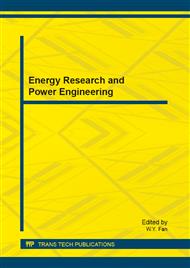p.270
p.274
p.278
p.283
p.287
p.291
p.296
p.301
p.307
The Die Design and FEA Analysis of Equal Channel Angular Extrusion
Abstract:
Equal channel angular extrusion (ECAE) is a process used to introduce severe plastic deformations (SPD) to processed materials with the aim of improving their mechanical properties by reducing the grain size. In order to investigate the effect of die angle on stress and strain produced by ECAE, a new die was designed and the finite element analysis (FEA) was carried out to simulate the ECAE process. The new die is comprised of one internal mold, two external molds and one pressure rod. The main advantage of new die is it can be used for different die angle wihout changing the external mold. As a reult, the new die design reduces the tool cost and improve the ECAE process efficiency. The FEA results show that shear deformation occurred during ECAE, and the maximum effective strain was about 1.669 locating at bottom of the workpiece.
Info:
Periodical:
Pages:
287-290
Citation:
Online since:
July 2013
Authors:
Keywords:
Price:
Сopyright:
© 2013 Trans Tech Publications Ltd. All Rights Reserved
Share:
Citation:


